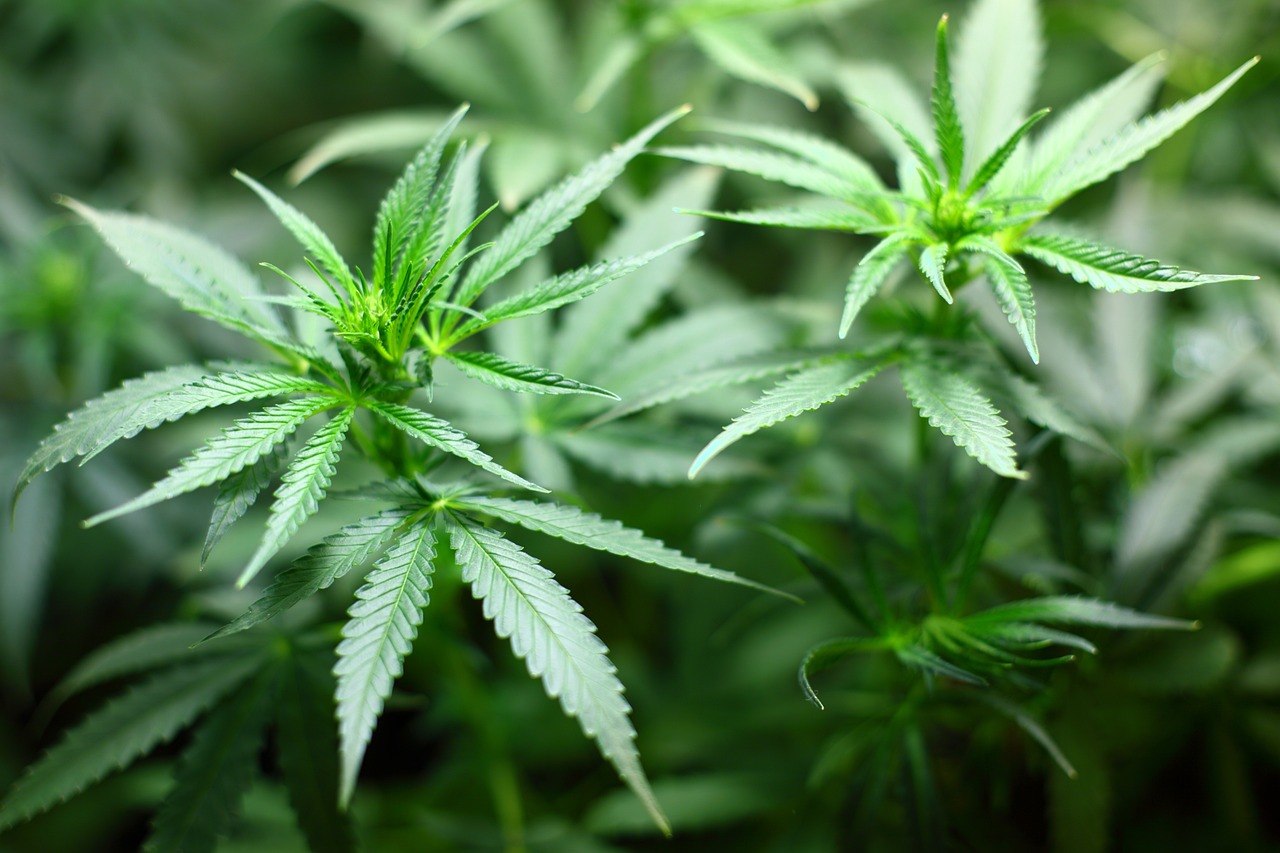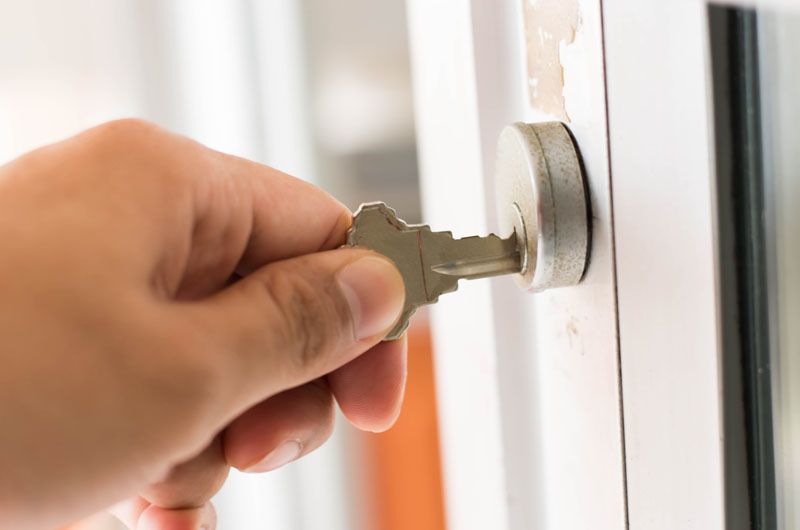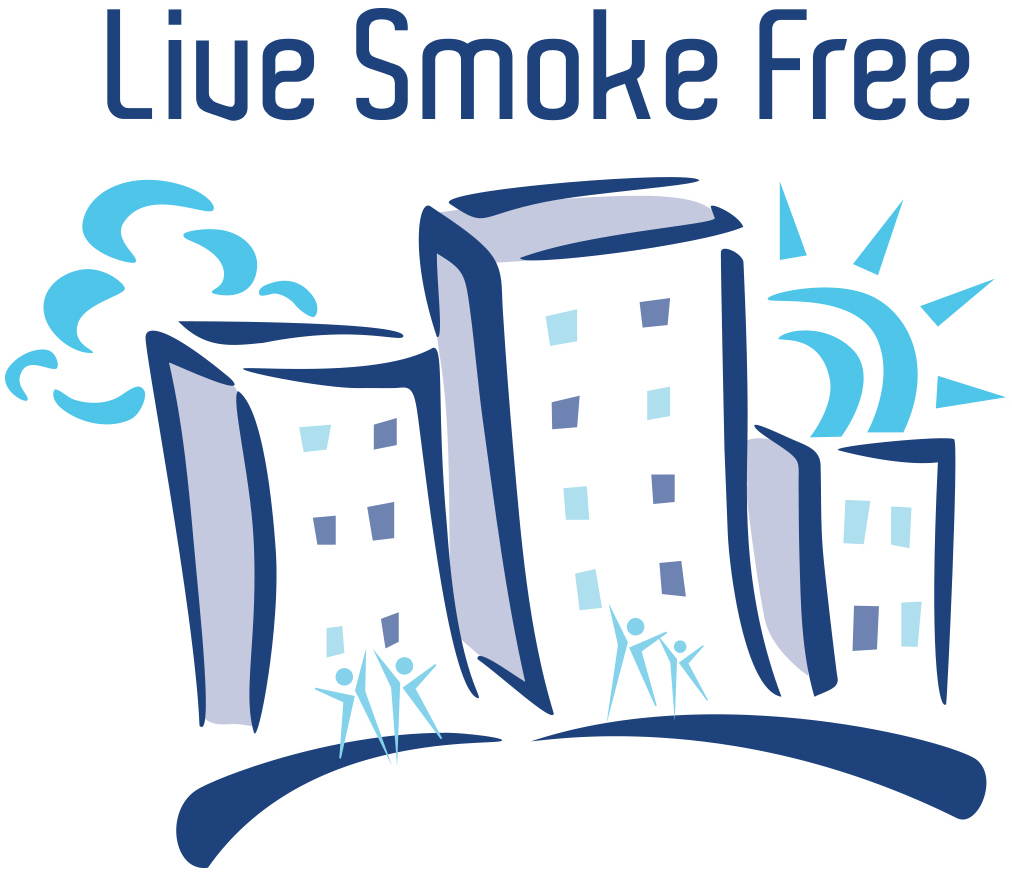CANNABIS LEGALIZATION AND SMOKE-FREE HOUSING IN MINNESOTA

Background
As of Tuesday, August 1, 2023, adult-use cannabis (also known as marijuana) is legal in Minnesota. The policy landscape is still evolving and has created confusion and challenges for property owners and managers, common interest communities (CIC), and renters. Minnesota has allowed the use of medical cannabis in oil, pill, and vapor forms since 2014 and in smokeable form since 2022.¹ However, legalization of recreational adult-use cannabis will bring new challenges to residents, owners, and managers of multi-unit housing.
Other states who have legalized cannabis have run into complexities. Multi-unit housing residents in Massachusetts, Maine, and the District of Columbia have suffered from secondhand cannabis smoke exposure in multi-unit housing after legalization.²,³,⁴ Some Minnesota property owners, property managers, and renters are already noticing an increase in secondhand cannabis smoke incidents in their buildings. In recent Live Smoke Free surveys, 57% and 37% of multi-unit housing residents in Burnsville and West St. Paul, respectively, reported exposure to secondhand cannabis smoke.
What does Minnesota’s new cannabis law say about smoking cannabis in multi-unit housing settings? What can be done to protect residents and staff from the harms of secondhand smoke?
Cannabis vs. Marijuana
People often use the words “cannabis” and “marijuana” interchangeably, but they don’t mean the exact same thing.
– The word “cannabis” refers to all products derived from the plant Cannabis sativa.
– The cannabis plant contains about 540 chemical substances.⁵
– The word “marijuana” refers to parts of or products from the plant Cannabis sativa that contain substantial amounts of tetrahydrocannabinol (THC). THC is the main substance responsible for marijuana’s effects on a person’s mental state. Some cannabis plants contain very little THC. U.S. law classifies these plants as “industrial hemp” rather than marijuana.


What is medical cannabis?
Medical cannabis (aka medical marijuana) is a term for derivatives of the Cannabis sativa plant that people use to ease symptoms caused by certain medical conditions. Cannabis sativa contains many active compounds. The most well known are delta-9 THC and cannabidiol (CBD). THC is the primary ingredient in cannabis that makes people “high.” A person can consume medical cannabis many ways, including smoking, eating, drinking, and vaporizing.
Many states (view map) currently have laws permitting the use of medical cannabis. The Minnesota legislature passed a law in 2014 allowing Minnesotans to use some forms of cannabis (pill, liquid, or vaporized) to treat an approved list of medical conditions. Qualifying users must join a state registry and purchase their medicine from an approved medical cannabis dispensary. In 2021, the state legislature passed a law allowing medical cannabis patients to purchase and smoke the dried plant. This law took effect in March 2022. This FAQ describes Minnesota’s medical cannabis law and its impacts on smoke-free housing.
Smoke is Smoke: Health Risks Associated with Secondhand Cannabis Smoke Exposure
Research on the health effects of secondhand cannabis smoke exposure has been limited because cannabis is illegal at the federal level. Still, a growing body of scientific evidence suggests that there are significant health risks associated with secondhand cannabis smoke exposure and that it should be regulated as tobacco smoke is regulated.
Like tobacco smoke, cannabis smoke contains fine particulate matter that can be breathed deeply into the lungs. However, these particulate levels are even higher in cannabis smoke than tobacco smoke.⁶ Cannabis smoke contains many of the same cancer-causing substances and toxic chemicals as secondhand tobacco smoke.⁷ Research shows that exposure to cannabis smoke is dangerous to health; it impairs blood vessel function, causes lung irritation and asthma attacks, and makes respiratory infections more likely.⁸,⁹ Secondhand aerosol from cannabis vaping poses health threats as well. Berkeley Lab researchers found that vaping and dabbing can be a source of ultrafine particles and harmful chemical exposure.¹⁰
Find additional research on the health effects of secondhand cannabis smoke exposure on the American Nonsmokers’ Rights Foundation’s “Secondhand Marijuana Smoke Fact Sheet.”
Whether it is from tobacco or cannabis, smoke is smoke. Due to the negative health risks of exposure to tobacco smoke, cannabis smoke, and vape aerosol, housing providers should adopt smoke-free policies that protect residents from all of these health risks.

Frequently Asked Questions
from housing providers about Minnesota’s new cannabis law
Can cannabis be smoked in a private residence starting August 1, 2023?
Owned single family homes
The new law states that single-family homeowners can smoke or vape cannabis in their homes, yard, and curtilage (yard/land/buildings associated with a home) starting August 1, 2023. However, an individual cannot smoke or vape cannabis in any place where a minor may inhale the smoke or aerosol, including a private home.
Private multi-unit housing rentals
The MN law is more complex for multi-unit housing (MUH) settings. Under the Minnesota Clean Indoor Air Act (MCIAA), smoking is currently prohibited in indoor common areas of rental apartment buildings (interpreted as buildings with three or more rental living units).
Starting August 1, 2023, MUH managers or landlords cannot ban the possession or use of cannabis or hemp-derived products in rental units except for “consumption by combustion or vaporization of the product and inhalation of smoke, aerosol or vapor from the product.” However, the law states in another section that adult use is not permitted where owners of private property have prohibited use including the whole range of methods of consumption. Additionally, starting March 1, 2025, the new law will ban the smoking and vaping of cannabis in “a multifamily housing building,” except for use of medical cannabis flower or medical cannabinoid products. So, until March 1, 2025, apartment landlords and managers can choose to either A) allow the smoking or vaping of cannabis inside the building (including individual units) or B) prohibit smoking and vaping of cannabis inside the building (including individual units).
Again, an individual cannot smoke or vape cannabis in any place where a minor may inhale the smoke or aerosol, including a private home.
At the time of this publication, it is still unclear who will enforce the multifamily housing provision of the cannabis law and how. Live Smoke Free will share more information on this as it becomes available.
Publicly-owned rental housing
The Department of Housing and Urban Development (HUD) has required public housing to have a commercial tobacco smoke-free policy in place since 2018. Because cannabis is still illegal federally, HUD prohibits the admission of people who use cannabis to HUD-assisted housing, including those who use medical cannabis. Find more information on this here.
Sober homes
The new state law allows sober homes to ban possession and use in sober housing.
Common interest communities (e.g. condos, townhomes, and cooperatives)
CICs are not covered under the MN Clean Indoor Air Act, but a CIC’s homeowners’ association (HOA) can adopt rules and bylaws with smoke-free protections in both common areas and private living spaces. Live Smoke Free has information here for CICs interested in adopting smoke-free policies.
Starting March 1, 2025, individuals may not be able to legally smoke or vape cannabis in multi-unit CICs. The term “multifamily housing building” is not defined in the new cannabis law, so it is unclear whether a CIC counts as a “multifamily housing building.” Because most CICs house multiple families in a shared building structure, it would be reasonable for HOAs to assume the smoking/vaping prohibition would apply to them. More clarity on this provision could come out of the 2024 MN Legislative Session or the Office of Cannabis Management’s rulemaking process to clarify the new law over the coming months.
For more information on adopting smoke-free policies for multi-unit housing, visit our Property Managers page or our Common Interest Communities page.
What is the Nuisance Provision in the Cannabis Law?
The cannabis law also recognizes that “any use of adult-use cannabis flower which is injurious to health, indecent or offensive to the senses, or any obstruction to the free use of property so as to interfere with the comfortable enjoyment of life or property” is a nuisance.
The nuisance provision in the cannabis law, which went into effect July 1, 2023, allows “a person who is injuriously affected or whose personal enjoyment is lessened by a nuisance” to file a lawsuit. That person may ask a court to order that the behavior causing the nuisance must stop, as well as money damages for the injury caused or a civil penalty of $250. The person may bring a lawsuit against a landlord or HOA who fails to enforce the terms of a lease or other governing document, like CIC by-laws or policies related to cannabis flower use. A lawsuit against a landlord or HOA can also seek a court order for the behavior to stop, as well as money damages or a civil penalty of $500.
This provision broadly defines nuisance and does not specify whether the person bringing a lawsuit must be a tenant or owner of CIC property where the nuisance is taking place. Additionally, it does not specify whether the person causing the nuisance must themselves be a resident of the subject property. Further clarification of this provision could occur in the next legislative session or in the Office of Cannabis Management’s rulemaking process.
How does the new law impact housing under the Minnesota Clean Indoor Air Act?
The new state law prohibits the smoking and vaping of cannabis anywhere that is currently covered by the Minnesota Clean Indoor Air Act (MCIAA). This includes common areas of rental apartment buildings (e.g., hallways, community rooms, lobbies, laundry rooms, etc.).
Common areas of CICs (like condos, townhomes, and cooperatives with HOAs) are not covered under the MCIAA. CICs would need to adopt a smoke-free policy to ensure that the smoking of cannabis and tobacco do not take place in common areas. Find information for CICs interested in adopting a smoke-free policy here.
Additionally, the MCIAA and the new cannabis law allow for private property owners to prohibit smoking and vaping of cannabis throughout the property, including units, outdoor patios or balconies, and other indoor and outdoor common areas of the property.
What steps can MUH property owners or managers take to prevent secondhand cannabis smoke infiltration in multi-unit housing properties?
Properties WITHOUT a current smoke-free policy
Managers and HOAs of buildings that do not have a smoke-free policy should adopt one. Managers and HOAs of buildings with a weak definition of smoking (i.e., the definition doesn’t explicitly include cannabis and/or use of electronic smoking devices/vaping) should update the policy. Find steps and resources to adopt a smoke-free policy here.
Properties WITH a current smoke-free policy
- Review your smoke-free policy to ensure that the definition of “smoking” includes “natural or synthetic tobacco or plant products intended for inhalation” and explicitly mentions cannabis/marijuana (sample here). Ensure that it covers the use of an electronic smoking device (vaping) of any substance where legal, recreational cannabis is frequently consumed by using an electronic smoking device.
- Proactively communicate smoke-free policy details with residents. Emphasize that smoking or vaping cannabis/marijuana inside the building or anywhere on the property (depending on the scope of the policy) is a violation of the smoke-free policy. A violation of the policy could result in lease violations, termination, or penalty per the HOA policies.
- Place signage around the property that clearly states what the smoke-free policy prohibits. Note: Live Smoke Free offers signage and window clings that include cannabis, as well as durable stickers to update existing signage to include e-cigarettes and cannabis. Order these materials here.
- Residents of multi-unit housing should review their building’s smoke-free policy and express their concerns about secondhand smoke exposure to their property manager or HOA board.
- Promote policy compliance. A majority of property managers report that a smoke-free policy is largely well followed and self-enforced by residents and staff. Occasionally, a small minority of residents struggle or refuse to comply. LSF offers a compliance and enforcement toolkit here. If you would like to consult on solutions specific to your situation, reach out to info@mnsmokefreehousing.org.

Health Equity and Housing Stability
Cannabis has historically been used to penalize and criminalize communities of color in the United States. Cannabis legalization will address some of this harm and the negative health outcomes caused by incarceration for drug crimes. However, cannabis legalization may also present new avenues for cannabis-related inequities. For example, it may lead to increased cannabis use and secondhand smoke exposure, continuing the upward trend seen nationally.¹¹ In the housing context, it could be inappropriately used by housing providers to remove residents who do not comply with smoke-free policies. Live Smoke Free firmly believes that stable housing and smoke-free housing are both essential to eliminating health disparities and encourages equitable approaches to smoke-free policy enforcement that minimize potential housing instability.
Additional Resources
MN Cannabis Legislation: MN Office of Cannabis Management: cannabis.mn.gov
Information about the harmful health effects of secondhand marijuana smoke exposure
Centers for Disease Control and Prevention: Health Effects of Marijuana
National Institutes of Health: Cannabis (Marijuana) and Cannabinoids: What you Need to Know
American Nonsmokers’ Rights Foundation: Secondhand Marijuana Exposure is Increasing
Legal information on marijuana and housing
Memorandum from HUD on Medical Marijuana Use in Public Housing and Housing Choice Voucher Programs
Information on Minnesota’s medical cannabis program in the housing context (2022)
Resources to adopt a smoke-free policy
Signs for Smoke-Free Minnesota Properties
Request free signs (or stickers to update existing signs) from Live Smoke Free

Citations
- “Medical Cannabis Program Key Dates.” Medical Cannabis Program Key Dates, MN Department of Health, www.health.state.mn.us/people/cannabis/about/timeline.html. Accessed 8 Feb. 2024.
- Teitell, Beth. “In Boston-Area Condos and Apartments, the Smell of Pot Pits Neighbor against Neighbor – The Boston Globe.” BostonGlobe.Com, The Boston Globe, 15 Apr. 2018, www.bostonglobe.com/metro/2018/04/15/boston-area-condos-and-apartments-smell-pot-pits-neighbor-against-neighbor/xxk0881IcmAZ9TeWSLy0bJ/story.html.
- Bodnar, Marissa. “I-Team Investigates Complaints about Pot in Public Housing.” WGME, 4 Feb. 2019, www.wgme.com/news/i-team/i-team-investigates-complaints-about-pot-in-public-housing.
- Yancey-Bragg, N’dea. “So Dank It’s Illegal (Literally): Man Barred from Smoking Medical Weed after Neighbor Sues.” USA Today, Gannett Satellite Information Network, 8 June 2023, www.usatoday.com/story/news/nation/2023/06/07/neighbor-sued-over-weed-smell/70297558007/.
- “Cannabis (Marijuana) and Cannabinoids: What You Need to Know.” National Center for Complementary and Integrative Health, U.S. Department of Health and Human Services, Nov. 2019, www.nccih.nih.gov/health/cannabis-marijuana-and-cannabinoids-what-you-need-to-know#:~:text=The%20cannabis%20plant%20contains%20about,on%20a%20person%27s%20mental%20state.
- Ott, W., et al., “Measuring indoor fine particle concentrations, emission rates, and decay rates from cannabis use in a residence, Atmospheric Environment: X, Volume 10, 2021, 100106, ISSN 2590-1621, https://doi.org/10.1016/j.aeaoa.2021.100106. (https://www.sciencedirect.com/science/article/pii/S259016212100006X)
- “Evidence on the Carcinogenicity of Marijuana Smoke.” Office of Environmental Health Hazard Assessment, California Environmental Protection Agency, Aug. 2009, http://oehha.ca.gov/prop65/hazard_ident/pdf_zip/FinalMJsmokeHID.pdf
- Wang, X., et al., “Brief exposure to marijuana secondhand smoke impairs vascular endothelial function” (conference abstract). Circulation 2014; 130: A19538. http://circ.ahajournals.org/content/130/Suppl_2/A19538.abstract
- “Air Quality.” Centers for Disease Control and Prevention, Centers for Disease Control and Prevention, 6 June 2022, www.cdc.gov/nceh/tracking/topics/AirQuality.htm#ParticulateMatter.
- Nguyen, Patton Khuu, and S. Katharine Hammond. “Fine particulate matter exposure from secondhand cannabis bong smoking.” JAMA Network Open, vol. 5, no. 3, 30 Mar. 2022, https://doi.org/10.1001/jamanetworkopen.2022.4744.
- Hasin DS, et al. “Prevalence of Marijuana Use Disorders in the United States Between 2001-2002 and 2012-2013.” JAMA Psychiatry. Published online October 21, 2015. http://archpsyc.jamanetwork.com/article.aspx?articleid=2464591
